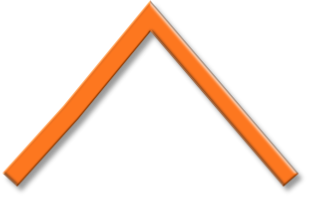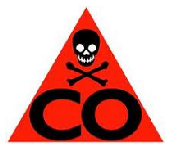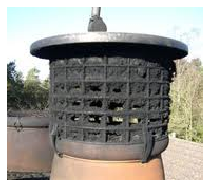 Home
Nests & More
Book A Sweep/Contact
Pots/Cowls/Stoves/More
Home
Nests & More
Book A Sweep/Contact
Pots/Cowls/Stoves/More

MASTER SWEEPS
# 1 CHIMNEY SWEEP SERVICE

Pots & Cowls Fitted



Flue Liners & stoves installed


Master Sweeps is a HETAS
registered business

How Often Should You Have Your Chimney Swept?
Many households make the mistake of neglecting their chimneys, having them swept only when they start to experience difficulties with their fires. By this time a lot of irreversible damage may already have been caused to their fireplace, stove, chimney flue or liner. And after a lot of money has been wasted on fuels that were not able to burn correctly and produce the heat they were capable of producing.
If these people had called in a chimney sweep sooner they could actually have saved money!
For more information about the sweeping process click here
Some people are a little more savvy and have their chimneys swept at least once a year. However, for some even this may not be enough.
If burning coal a chimney should be swept at least twice a year, once before the burning season commences, usually late summer, and after the burning season has ended, usually spring or early summer.
The reason for sweeping before the burning season is to ensure no birds nests, spiderwebs or any other forms of blockages have been laid in the chimney during the summer months that would impede the correct operation of the fireplace / stove and chimney flue when the fire appliance is again used during the autumn and winter burning period.
The reason for sweeping after the burning season has ended is to remove soot / tar / creosote build up that would otherwise attack and corrode the chimney flue or liner if allowed to remain in-
The reason fireplaces and stoves can smell in hotter periods, such as summer months, is due to the reversal of the chimney operating principle. During cold months the air temperature outside is lower than the air temperature inside your home. As a result, the hot air produced in your home by your fire is naturally drawn (hot air rises) to the cooler outside air and so travels up the chimney. As the warm air leaves the room and goes up the chimney a vacuum if created in the room. Nature abhors a vacuum and so fresh new air is drawn into the room via air vents in the room. The whole cycle is then repeated.
In warmer months the air outside your home can be warmer than the air temperature inside your home and the outside air will want to travel down your chimney and into your home. As the air travels down your chimney it picks up soot and tar / creosote odours and transfers these odours into your home. During warmer periods windows tend to be opened to allow cooler air into the house. The effect of this can be to create a vacuum within the house and so the outside air will travel down the chimney flue and into the house to fill the vacuum created by the opening of doors and windows. Thus bringing the unpleasant chimney smell into your home.
By having your chimney swept the deposits inside your chimney that cause the unpleasant odours are removed and less odours are experienced.
If burning wood on a regular basis, i.e., on a daily basis during colder periods, the frequency of sweeping increases to three times per year. Once before the burning season commences, once during the burning period, i.e. half way through the winter period, and once after the burning season has ended. The reason for the increased frequency of sweeping if wood is used is due to the much greater levels of creosote given off by wood when burnt. The creosote produced by the burning wood attaches itself to the inside of chimneys like treacle to a pancake. Not only do these deposits corrode your chimney (particularly stainless steel liners) they are also highly flammable and the prime cause of chimney fires.
Oil and gas fire appliance users should have their chimneys swept as a minimum at least once a year to remove combustion deposits and other blockages, e.g. spiderwebs etc.
 Return To Top
Return To Top
Why Have Your Chimney Swept?
Reason # 1
Blockages
Birds, insects and squirrels like chimneys to make their homes in because it's nice and safe and warm in there.
Tel: 07407 453630 to have them removed. Your chimney is the passage that dangerous fumes, gases and smoke take to exit your home so that they can be safely dispersed out into the atmosphere.
If this passage becomes blocked or restricted those dangerous gases cannot escape correctly and have only one place to go...back into your home!
The smell of smoke coming into your home from your fireplace is never a pleasant event and a sure sign that all is not well with your fire appliance or chimney.
However, it's the gases coming from your fireplace that your nose can't detect that are the most worrying.
Carbon Monoxide is an extremely dangerous gas that is created during the combustion process as the fuel in your fire burns. It has no odour or colour and cannot be detected by the human nose.
Whether it's wood, coal, gas or oil you burn, all these fuels give off Carbon Monoxide and if this gas is prevented from traveling up through the chimney and escaping safely to the outside air then your health and even life can be at risk.
Read the link on this site about Carbon Monoxide for more details about this killer gas or do a Google search.
Reason # 2
Chimney Fires
As fuels are burned in the fireplace they give off gases and smoke that contain, amongst many other things, creosote. Creosote eventually builds up on the sides of the chimney and once present in sufficient amounts can catch fire and your house along with it.
Creosote deposits are highly combustible and are just waiting for a flame to ignite them. For that reason it is highly recommended that you never throw that empty pizza box or collection of old bank statements in to your fire! These items are light weight, will catch fire and could travel up your chimney.
If creosote is present on the sides of your chimney the net effect of a naked flame and creosote is a chimney fire
Reason # 3
Improved Performance
All fuels need oxygen to burn. A restricted oxygen supply means the fire will never reach the desired temperature (over 500 degrees celsius) and will simply smolder away, and the good money you paid for the coal, wood, oil etc is being wasted. Your money will literally go up in smoke (not heat).
Smoldering fires increase the amount of tar and creosote given off by fuels which collects on the chimney walls and a vicious cycle is created.
By keeping the chimney clear of debris, soot and tar, the gases created during the combustion process will escape unrestricted up through the chimney.
As these combustion gases travel up the chimney they create a vacuum behind them. Nature abhors a vacuum and air from the room is drawn into the fireplace to replace the hot air and gases that have gone up the chimney.
This flow or 'draw' of air is required to create and maintain a healthy fire and a good draw of air will ensure your fuel reaches the right temperatures, thus giving off the heat energy it is capable of producing.
However, the draw rate of air (oxygen) into the fire is determined by, but not exclusively, the diameter of the flue.
The flue when originally built was built to a specific diameter relative to the size of the fireplace it was designed to serve. If the flue diameter decreases in size (see photos on the right of this page) due to a build up of soot and tar, then the net effect is that less air (smoke and gases) can travel up the flue in a given period of time. This means a smoking fire (smoke and carbon monoxide entering the room) and a smoldering fire, i.e. a fire not reaching its' full heat generating potential.
By having your chimney swept at least once a year you will be helping your fuel to burn correctly and produce the heat it is capable of producing. Giving you more value for your money. You will also be prolonging the life of your chimney or liner and at the same time reducing the possibility of having a chimney fire.
Reason # 4
Unpleasant Odours
During warm summer months when fires are not in use they can give off unpleasant smells.
The reason this happens is due to a difference between the air temperature / pressure inside and outside the house.
Basically, the air temperature / pressure inside your house may be different to that of the outside air temperature / pressure.
This causes the air from outside to be drawn down your chimney and into your home. As the air proceeds the wrong way down your chimney it picks up the odours from the tar and creosote that may be present on the sides of the chimney and transmits those odours into your home.
Having your chimney swept at the end of the burning season may help to reduce these unpleasant odours in the summer months.
Reason # 5
Reduces Damage to your Chimney
Tar and creosote damages your chimney flue or liner over time and when combined with water vapours will literally eat through a stainless steel chimney liner and mortar.
Having your chimney or flue liner swept reduces build up of these chemical compounds and increases the life span of your chimney.
Does your chimney sweep ensure your cowl is fully cleaned as part of the sweep? If not perhaps you should consider changing your chimney sweep?.
A professional chimney sweep's job is to remove soot, creosote blockages and debris from your chimney flue to ensure your fire appliance operates properly, i.e. has a good draw, to ensure that products of combustion, (smoke and gases) can freely travel up the chimney flue and escape into the outside atmosphere and to ensure it is safe for you to use your fire appliance.
Your chimney sweep should have all the tools required to carry out the service you are paying them to complete. Any person can buy a set of chimney sweep rods and brushes. However, it takes a lot more than these few items to carry out a proper chimney sweep. Knowledge, training, skills and the correct professional tools are a prerequisite to completing a safe and effective sweep.


 Return To Top
Return To Top

Call Us Now
07407 453630
# 1 CHIMNEY SWEEP SERVICE
MASTER SWEEPS

07407 453630